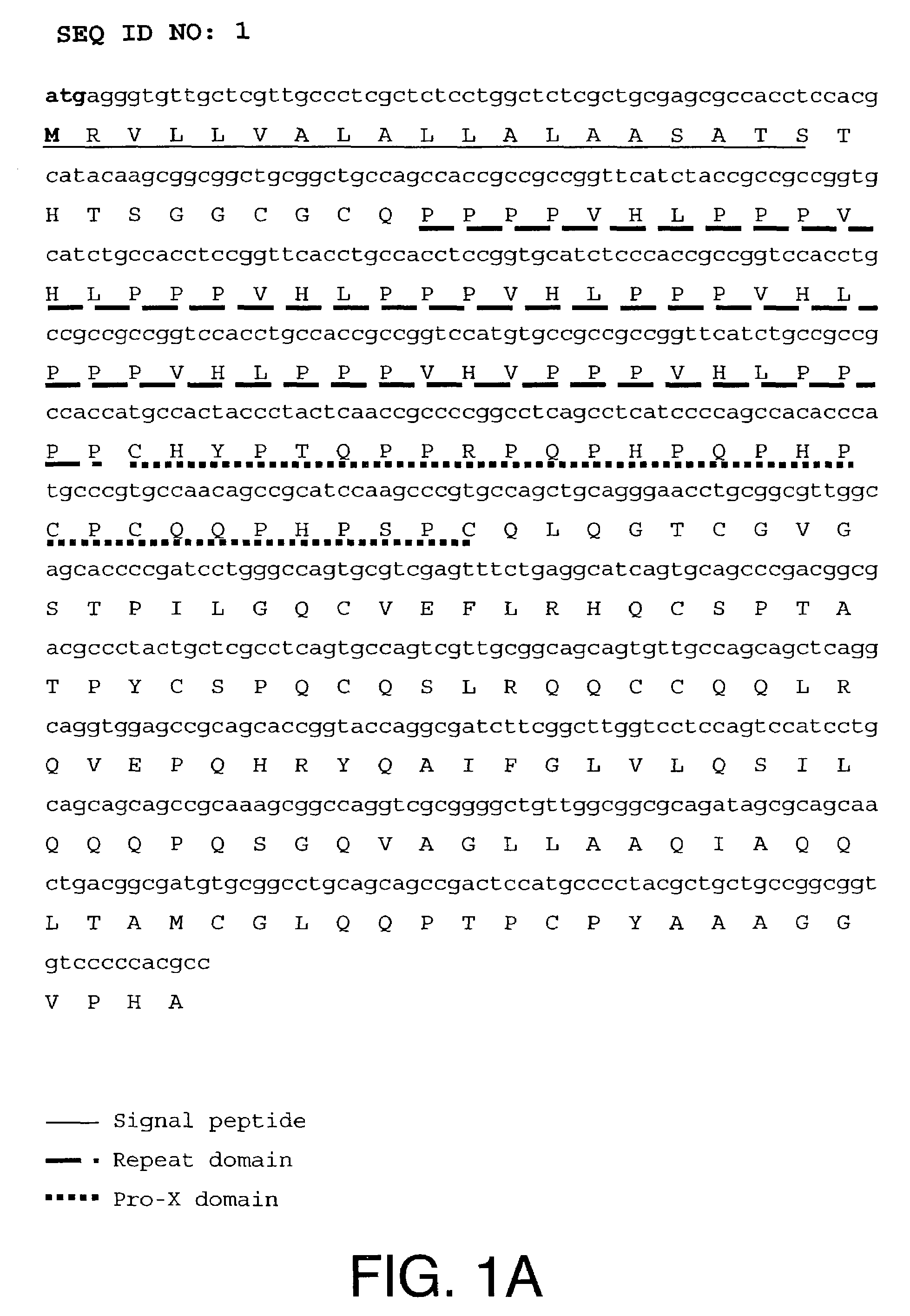Production of peptides and proteins by accumulation in plant endoplasmic reticulum-derived protein bodies
a technology of endoplasmic reticulum and peptides, which is applied in the direction of peptides, plant/algae/fungi/lichens ingredients, dna/rna fragmentation, etc., can solve the problems of limiting the usefulness of pb assembly and the unknown mechanism by which these domains promote the pb assembly
- Summary
- Abstract
- Description
- Claims
- Application Information
AI Technical Summary
Benefits of technology
Problems solved by technology
Method used
Image
Examples
example 1
Production of Calcitonin in Tobacco Plants
[0083]A successful example of CT production in tobacco plants is described below. Various proline rich domains were engineered from γ-zein to serve as fusion partners through a cleavable protease site. Mature CT coding region (32 aa) was fused at the C-terminus of the γ-zein domains and expressed in transgenic tobacco plants. A cleavable protease site was introduced at the C-terminus of γ-zein domains to recover pure calcitonin afterwards. This approach provides a high accumulation of fusion proteins within the ER and the formation of ER-derived PBs in tobacco plants. Fusion proteins were highly accumulated in ER-derived PBs in tobacco leaves. The expression level of said fusion proteins reached, in some cases, up to 12.44% of total soluble proteins. After only two purification steps, the fusion proteins were submitted to enterokinase cleavage permitting the release of calcitonin. Pure calcitonin was obtained from digestion mixture by a reve...
PUM
| Property | Measurement | Unit |
|---|---|---|
| temperature | aaaaa | aaaaa |
| temperature | aaaaa | aaaaa |
| pH | aaaaa | aaaaa |
Abstract
Description
Claims
Application Information
 Login to View More
Login to View More - R&D
- Intellectual Property
- Life Sciences
- Materials
- Tech Scout
- Unparalleled Data Quality
- Higher Quality Content
- 60% Fewer Hallucinations
Browse by: Latest US Patents, China's latest patents, Technical Efficacy Thesaurus, Application Domain, Technology Topic, Popular Technical Reports.
© 2025 PatSnap. All rights reserved.Legal|Privacy policy|Modern Slavery Act Transparency Statement|Sitemap|About US| Contact US: help@patsnap.com



